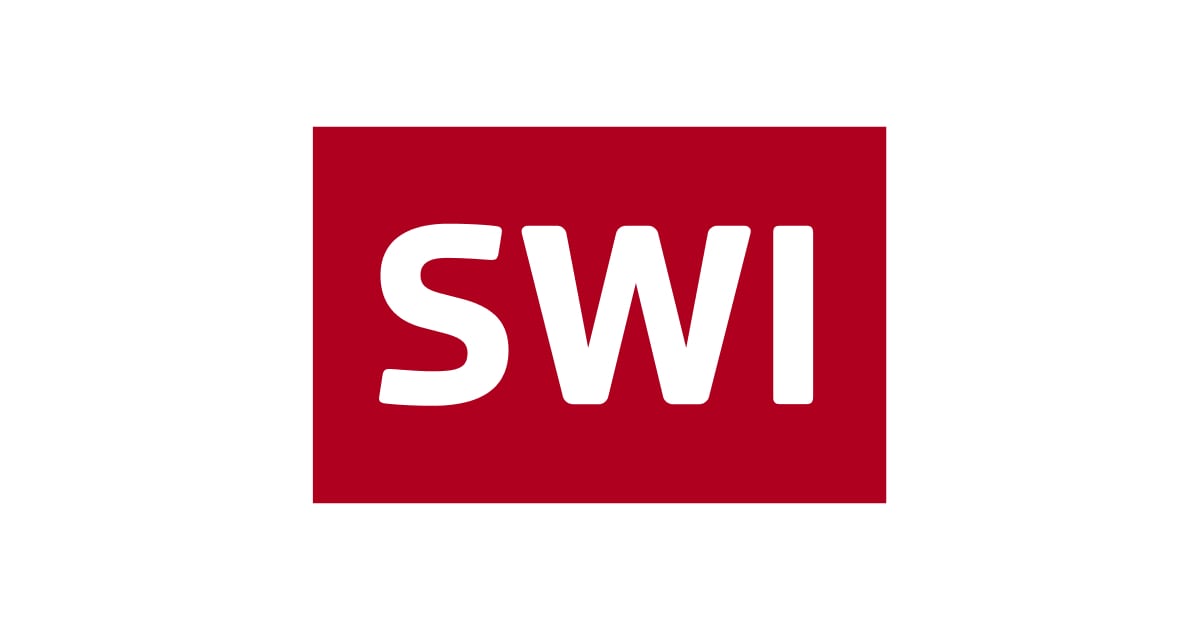- Aston Martin Valkyrie set to conclude groundbreaking debut FIA WEC season with Bapco Energies 8 Hours of Bahrain
- Aston Martin THOR Team aims to maintain competitive momentum with spectacular V12-powered British hypercar in…
Author: admin
-

Aston Martin Valkyrie reaches climax of debut world championship campaign
-

Asian Stocks Fall After Weak US Data, Dollar Gains: Markets Wrap
(Bloomberg) — Asian equities edged lower along with equity-index futures after weaker US economic data and uncertainty over the Federal Reserve’s policy outlook weighed on sentiment.
A gauge of the region’s shares fell 0.2%, diverging from gains in tech stocks in the US. Contracts for the S&P 500 fell 0.3% after the underlying index posted a modest gain Monday, although more than 300 members in the index actually retreated. Nasdaq 100 futures fell 0.4% with Palantir Technologies Inc. falling more than 4% in extended trading on concerns about the company’s lofty valuation after a record run-up.
A gauge of the dollar extended its gains to a fifth day, strengthening against all other Group-of-10 currencies and trading at levels last seen in August. The greenback’s advance has come amid mixed signals from Fed officials, following Chair Jerome Powell’s warning last week that a rate cut in December isn’t a foregone conclusion.
US factory activity shrank in October for an eighth straight month, reflecting softer production and demand, and Fed officials gave mixed signals on the path ahead for interest-rate cuts. Even so, global stocks have rallied for seven straight months since the tariff-fueled selloff in April, driven increasingly by technology heavyweights and prompting calls for broader-market consolidation.
“Asia’s taking a breather after a strong run,” said Billy Leung, an investment strategist at Global X Management. “With US data softening and Fed officials keeping policy optionality alive, investors are reassessing positioning rather than chasing risk.”
Economists and policymakers are relying more on private reports such as the ISM survey for clues on the economy and job market in the absence of official data because of the US government shutdown. Friday’s scheduled employment report is also poised to be delayed as a result.
The Institute for Supply Management’s manufacturing index eased 0.4 point to 48.7, according to data released Monday. Readings below 50 indicate contraction, and the measure has been stuck in a narrow range for most of this year.
Gold edged lower for a third consecutive session. Treasuries steadied, while oil fell as the market weighed OPEC+’s decision to pause output hikes.
Meanwhile, Federal Reserve Governor Lisa Cook said she sees the risk of further labor-market weakness as greater than the risk that inflation will pick up. She stopped short of endorsing another interest-rate cut next month.
“Looking ahead, policy is not on a predetermined path,” Cook said. “We are at a moment when risks to both sides of the dual mandate are elevated. Every meeting, including December’s, is a live meeting.”
Her comments echoed remarks from her colleagues who were equally noncommittal about whether the central bank should deliver a third straight rate reduction when policymakers convene in December.
Chicago Fed President Austan Goolsbee warned he’s more concerned about inflation than jobs. His San Francisco counterpart Mary Daly said officials should “keep an open mind” about the possibility of a December cut. Governor Stephen Miran noted policy remains restrictive.
Elsewhere, shares in Australia fell ahead of a central bank rate decision later Tuesday, when policymakers are expected to stand pat.
“Concerns over high valuations persist, and the Federal Reserve’s policy outlook appears murkier,” said Ulrike Hoffmann-Burchardi at UBS Global Wealth Management. “Despite the strong gains in equity markets this year, we continue to believe that this bull market has room to run.”
Corporate Highlights:
Palantir Technologies Inc. raised its annual revenue outlook to $4.4 billion and outpaced analyst estimates for third-quarter sales, citing “accelerating and otherworldly” growth for its artificial intelligence and data analytics products. Starbucks Corp. is selling a majority stake in its China unit to private equity firm Boyu Capital for $4 billion to help accelerate its coffeehouse business in the country. Grab Holdings Ltd. raised its earnings forecast for the year after quarterly profit topped estimates, signaling robust demand for the Southeast Asian ride-hailing and food delivery firm’s new products. Netflix Inc. is in talks to license video podcasts distributed by iHeartMedia Inc. as it looks to compete head on with YouTube, according to people familiar with the conversations.
Some of the main moves in markets:
Stocks
S&P 500 futures fell 0.3% as of 10:41 a.m. Tokyo time Japan’s Topix rose 0.5% Australia’s S&P/ASX 200 fell 0.7% Hong Kong’s Hang Seng rose 0.4% The Shanghai Composite rose 0.1% Euro Stoxx 50 futures were little changed Currencies
The Bloomberg Dollar Spot Index rose 0.1% The euro fell 0.1% to $1.1505 The Japanese yen was little changed at 154.35 per dollar The offshore yuan was little changed at 7.1275 per dollar Cryptocurrencies
Bitcoin rose 0.2% to $107,129.93 Ether rose 1.2% to $3,644.23 Bonds
The yield on 10-year Treasuries was unchanged at 4.11% Japan’s 10-year yield advanced two basis points to 1.675% Australia’s 10-year yield advanced two basis points to 4.35% Commodities
West Texas Intermediate crude fell 0.2% to $60.94 a barrel Spot gold fell 0.4% to $3,986.57 an ounce This story was produced with the assistance of Bloomberg Automation.
–With assistance from Winnie Hsu.
©2025 Bloomberg L.P.
Continue Reading
-

Study sheds new light on the relationship between bats and dangerous viruses
A groundbreaking study published in Nature’s Communications Biology sheds new light on the relationship between bats and dangerous viruses. Led by researchers at the University of Oklahoma, the study shows that contrary to…
Continue Reading
-

Smartphones match traditional methods in monitoring patients with muscular dystrophy
Stanford Medicine researchers found that a smartphone could monitor patients with two types of muscular dystrophy as well as traditional methods and diagnose conditions more accurately — at no cost.
Because researchers have made…
Continue Reading
-

Pakistan show women’s coach the exit door following team’s finish at the last spot in the World Cup
The Pakistan Cricket Board (PCB) will not renew the contract of women’s head coach Mohammad Waseem after the side finished at the bottom of the points table in the recently concluded World Cup in India and Sri Lanka. The Fatima Sana-led side…
Continue Reading
-

Hijacking cellular machinery within cancer cells to promote antitumor immunity
Investigators from Mass General Brigham have developed a way to promote antitumor immunity by hijacking cellular machinery within cancer cells. The study demonstrated that inducing cancer cells to produce an immune-activating molecule led to reduced tumor growth in preclinical models. Results are published in PNAS.
“Tumor cells comprise a significant proportion of the tumor microenvironment but are often under-utilized for immunotherapy,” said corresponding author Natalie Artzi, PhD, a researcher in the Mass General Brigham Department of Medicine. “These findings highlight how tumor cells can be used to actively contribute to their own elimination.”
The presence of double-stranded DNA (dsDNA) in a cell’s cytoplasm activates innate immune sensors that set off defense mechanisms against potential infections or cellular damage. One such sensor known as cyclic GMP-AMP synthase (cGAS) detects cytosolic dsDNA and produces cyclic GMP-AMP (cGAMP), which triggers the stimulator of interferon genes (STING) pathway and leads to inflammatory immune responses. Furthermore, cGAMP can be transported out of the cell to activate neighbouring cells. While cancer cells can have high levels of cytosolic dsDNA, they often silence the cGAS-STING pathway – preventing their own activation and of bystander immune cells within the tumor microenvironment.
The research team exploited this innate mechanism within cancer cells to increase cGAMP production and thereby boost antitumor immunity. They found that cultured mouse melanoma cells upregulated cGAMP production when treated with dsDNA and lipid nanoparticles (LNPs) carrying mRNA coding for cGAS. Immune cells showed signs of activation in response to elevated extracellular cGAMP levels produced by cancer cells. Similarly, treatment with cGAS LNPs activated surrounding immune cells, slowed tumor growth and improved overall survival in mouse models of aggressive melanoma. Combining this treatment with immune checkpoint blockade therapy further improved outcomes.
The authors suggest that this strategy could find future applications beyond cancer therapies, including in vaccines.
Continue Reading
-
Starbucks to Sell 60% of Its China Business to a Private Equity Firm – The New York Times
- Starbucks to Sell 60% of Its China Business to a Private Equity Firm The New York Times
- Starbucks and Boyu Announce Joint Venture for the Next Chapter of Growth in China Starbucks Coffee
- Factbox-Who’s selling? Starbucks and other US companies trimming China exposure By Reuters Investing.com
- Starbucks Joins Long List Of US Firms Selling China Stakes Finimize
- Starbucks cedes China control to Boyu Capital Yahoo Finance
Continue Reading
-

NIH grant supports research on how the immune system responds to serious eye infections
New research that sheds light on how the immune system responds to serious eye infections is underway at Wayne State University, supported by a $2.3 million federal grant from the National Eye Institute of the National Institutes of…
Continue Reading
-

Shutdown Nears Its End — But Economic Damage Is Mounting, Goldman Says
Benzinga and Yahoo Finance LLC may earn commission or revenue on some items through the links below.
The U.S. government shutdown has dragged into its 33rd day, and while a resolution may soon be approaching, economists warn the economic fallout is already underway.
In a note to clients on Monday, Goldman Sachs economist Alec Phillips said the standoff in Washington is likely to cost the U.S. economy more than a full percentage point of growth in the final quarter of 2025, shaving GDP growth to just 1.0%.
That’s a significant downgrade. Goldman had previously expected a stronger finish to the year, but now believes the shutdown will result in postponed federal spending, delayed hiring, and reduced investment.
Don’t Miss: If there was a new fund backed by Jeff Bezos offering a 7-9% target yield with monthly dividends would you invest in it?
If current odds are any guide, the shutdown could stretch further still.
Prediction markets tracked by CFTC-regulated betting platform Kalshi peg the median expected duration at 45.9 days, or until Nov. 15.
As of now, there’s an implied 75% chance it lasts over 40 days, and a 35% chance it extends beyond 50.
The standoff is shaping up to become the longest government shutdown in U.S. history, surpassing the 35-day shutdown in 2018-2019.
Yet pressure is mounting. Missed pay for air traffic controllers and TSA screeners on Oct. 28, with another due Nov. 10, threatens a replay of the 2019 shutdown, when airport delays forced a last-minute compromise.
Meanwhile, SNAP food benefits, normally issued the first week of each month, are at risk—though a recent court ruling may allow for partial disbursement using contingency funds.
Unlike previous shutdowns that targeted specific agencies, this one involves a full lapse in congressional appropriations, making it broader in scope and impact.
“This shutdown will have the greatest economic effect on record,” Goldman said in the note. “A longer duration could spill over into private-sector activity, delaying investments and stalling consumption.”
See Also: The ‘ChatGPT of Marketing’ Just Opened a $0.81/Share Round — 10,000+ Investors Are Already In
The immediate damage is expected to come from federal employee furloughs and delayed government purchases.
If the shutdown runs six weeks, federal spending pushed into first-quarter 2026 could slightly boost growth by 1.3 percentage points in that quarter, according to Goldman’s models.
Goldman Sachs sees growing signs the shutdown may soon end. The start of ACA enrollment on November 1 has intensified focus on health care subsidies, while the November 4 elections and the upcoming congressional recess could shift political incentives. Public-sector unions, including the AFGE, are now calling for a resolution, adding pressure on Democrats and Republicans to reach a deal.
Continue Reading
-
Dengue continues to haunt people as number of cases reaches 4,836 – Dawn
- Dengue continues to haunt people as number of cases reaches 4,836 Dawn
- A worker sprays fumigation vapour to stem the spread of dengue virus in Peshawar Reuters Connect
- Dengue cases surge in Khyber Pakhtunkhwa Aaj English TV
- Public representatives…
Continue Reading